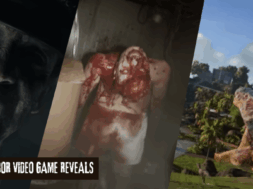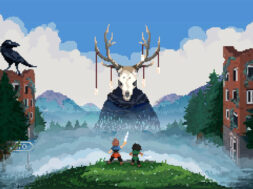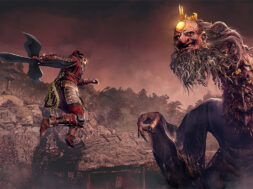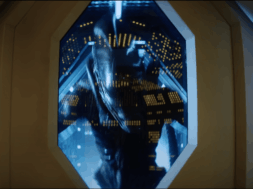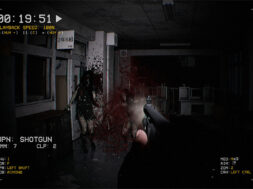Indie horror was a big part of the genre in the past decade (as you may have noticed in our horror games of the decade list). While AAA developers often were hesitant to fund big-budget horror games, independent developers not only embraced the genre, but found ways to evolve the genre. Amnesia, Outlast, and Layers of Fear found success and resonated with fans, despite their smaller scale. Though most of the well-known games from the decade were first person, there was a wealth of 2D horror games that did some amazing things in the genre. We decided to champion five of the best examples.
THE LAST DOOR (The Game Kitchen)

Most of the games I chose for this list are side-scrolling puzzle platformers, but The Last Door deserves a shoutout creating a chilling point-and-click adventure in a mostly 2D realm. Taking heavy inspiration from the works of Edgar Allen Poe and H.P. Lovecraft, The Last Door tells the story of an ancient evil being summoned into Victorian England. Told episodically over two seasons, the plot revolves around your character being called by the last words of his childhood friend, putting him on a collision course with a mysterious supernatural force.
Instead of directly adapting Lovecraft mythology, like so many games tend to do, The Last Door keeps the themes that Lovecraft explored rather than the iconography, replacing tentacled monsters with creepy bird imagery. Its heavy pixel-art style does a great job of being suggestive of things without explicitly showing you the horrors, allowing your mind to fill in the gaps. I’m not always a huge fan of point-and-click adventures, but this one ticked all the boxes, making one of the most memorable horror experiences of the decade.
KNOCK-KNOCK (Ice Pick Lodge)

While it’s one of my favorite gaming experiences, sometimes I find it hard to recommend Knock-Knock to people. Much like Ice-Pick Lodge’s other famous series, Pathologic, the game defies easy description with its distinct and surreal mood. The gameplay somewhat resembles playing hide and seek with surreal monsters in an old, ever-expanding house while trying to figure out the proper ritual-like actions needed to move on to the next night.
Perfectly capturing the feeling of waking up in the middle of the night and trying to figure out what the hell is going on while still groggy, Knock-Knock creates a strange dreamlike tone, embracing repetition to give the player a feeling of anxiety and madness. It doesn’t do anything particularly innovative gameplay-wise, but it manages to evoke a feeling in the player like no other.
INSIDE (Playdead)

Playdead studios struck a chord with their excellent 2D puzzle-platformer Limbo at the beginning of the decade, but their follow-up Inside improved on everything their debut did and then some. Once again, they created a tale of a child wandering through increasingly strange and hostile circumstances, giving the player plenty of interesting puzzles to try to solve as they progress.
While not black-and-white like Limbo, the game still has a striking art style, using color sparingly to highlight specific elements on screen. Inside continually adds interesting and surprising mechanics while presenting a beautifully surreal story that never fully explains itself, but doesn’t confuse the player. The ending of the game is one of the most strange and satisfying sequences in a 2D game since the end of Braid. You can sit down and beat this game in one four-hour sitting, so you’ve got no excuse not to try it.
LONE SURVIVOR (Jasper Byrne)

Do you miss Silent Hill? Well then Lone Survivor may be the next game you need to try. Developer Jasper Byrne did an excellent demake of Silent Hill 2 called Soundless Mountain II, and it’s clear that he carried over the mood of that project into Lone Survivor. You control an unnamed protagonist who believes he may be the last survivor of an infection that has turned people into horrifying mutants. Forced to leave your apartment by a shortage of resources, you explore your complex trying to escape the madness going on around you.
Much of the game is focused on keeping your character well-fed and rested, while also trying to manage his fragile mental state. It’s unclear what is real and what is a hallucination as you scrounge for supplies and hide from the horrors wandering the halls. Much like The Last Door, the pixelated art style of Lone Survivor also does wonders in showing just enough to get your fear centers working without giving you all the gory details. The game lasts about five hours, but with five different endings to uncover, there’s always a reason to go back.
DARKEST DUNGEON (Red Hook Studios)

Another one on this list that’s not a puzzle-platformer, Darkest Dungeon provides one of the deepest and most expansive turn-based RPG experiences I’ve ever played. The game is notorious for its brutal difficulty, but this challenge is perfectly in line with the tone and world presented. You select a party of adventurers from your pool of characters and send them into terrifying dungeons in an attempt to cleanse your estate and the surrounding areas of unspeakable evils.
These evils not only physically threaten your characters, but can also threaten their mental state, making them a danger to themselves and their party. Characters lost in battle are lost permanently, making you question how far you push each venture into the dungeon. Each section of the dungeon is explored on a 2D plane, forcing you to pay close attention for traps you might walk into. Combat also makes interesting use of the 2D environment, putting a heavy focus on positioning for both who you can hit and what attacks you have available to you. Even without the excellent DLC, there’s so much to do in Darkest Dungeon that it could really be your forever game, always offering one more run to challenge yourself.


